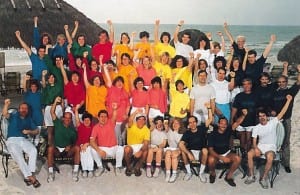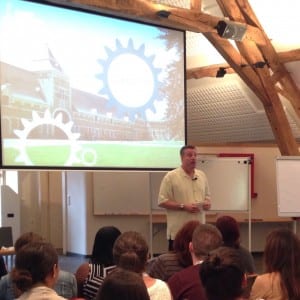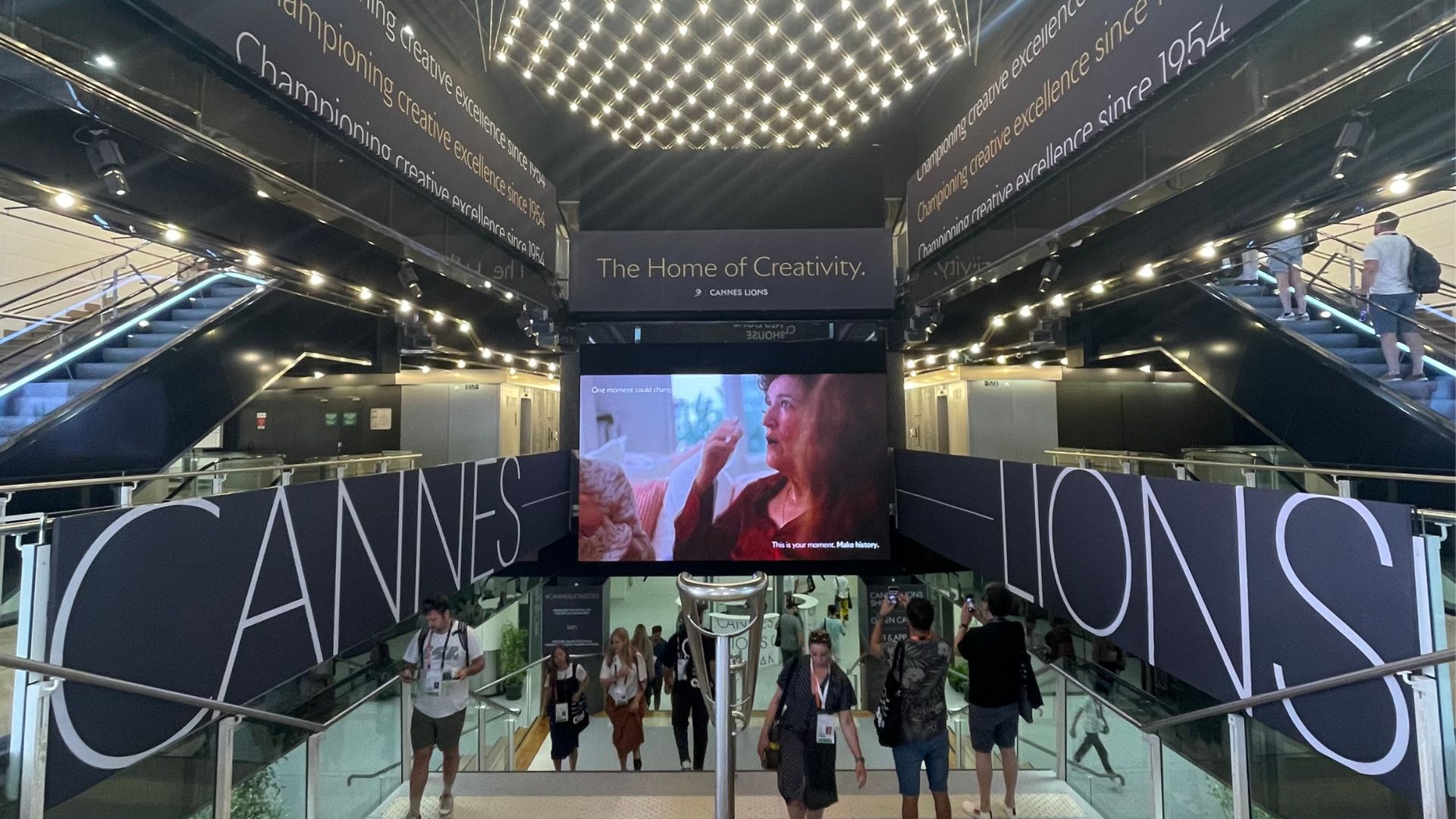
Early Camp Ketchum group photo.
Prescient: To know beforehand; having foresight.
The original architects of Camp Ketchum 35 years ago couldn’t possibly have foreseen all of the dynamic change in our industry and how we work today. Yet the competitive team structure at Camp Ketchum, our week-long training program, is an ideal laboratory for the way we serve clients in today’s always-on, real-time marketing environment.
At Camp, the 80 Campers are divided into eight teams of 10 to address a real client brief and compete for the client assignment. Originally the intent was obvious: to train our people to be better at pitching new business.
Today that’s still one of the goals. But I think the greater benefit is that it is a rich context to improve our ability to work in our increasingly prevalent “liquid teams.”
Thirty-five years ago we tended to work in small hierarchical account teams all in one location, occasionally tapping a specialist, like a media expert or communications trainer, to supplement the work of the core team. The core team had a boss and a few people who directly reported into him or her.

Rob Flaherty warming up the crowd at Camp Ketchum 2015
Today, increasingly, that static team composition is the exception to the rule. More often we are assembling teams of several specialists that are cast and purpose-built around the assignment – working feverishly for a few weeks and then disbanding and moving on to a different assignment with a different cast. One hallmark of these teams is that they don’t all “report” into the “boss” of the team. To be an effective leader today requires skill at motivating and managing many people who don’t formally report into you at all. In fact, most of our senior leaders at Ketchum – who are thought of as “bosses” – actually spend a lot of their time leading people who don’t report into them.
Which brings us back to Camp. The competitive teams were revealed today and they’ll get the assignment tomorrow. The overt agenda will be to scramble – using our proprietary RISC thought process – to develop a winning campaign that will be presented to the client on Friday.
But what I’ll be most interested to watch is the team dynamic. Who leads? Is the leader old-school and hierarchical – telling people what to do rather than bringing out their best thinking? Does the leader change over time (get deposed)? How does the team decide what they’re going to do? How do they assign roles? How do they manage their time to finish on time? Do they honor the specialists on the team as much as the “account team” leaders? How do they resolve conflict? How do they become a jazz ensemble rather than an assembly line of soloists?
These are the factors that determine our success in today’s liquid teams at Ketchum. Consequently, by giving us a very contemporary context to improve our teamwork, Camp Ketchum is now delivering an unintended benefit that may be greater than the original goal.
So thank you to Paul Alvarez, Dave Drobis, Judith Rich, Ray Kotcher and other early architects of Camp Ketchum for being so impressively ahead of their time and allowing us to continue to be ahead of the pack (click to tweet).



